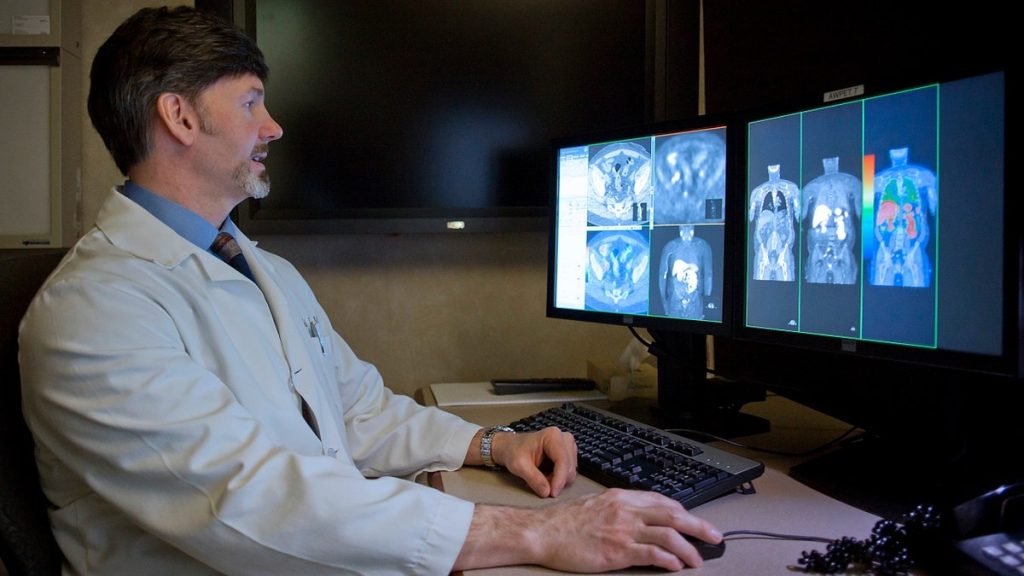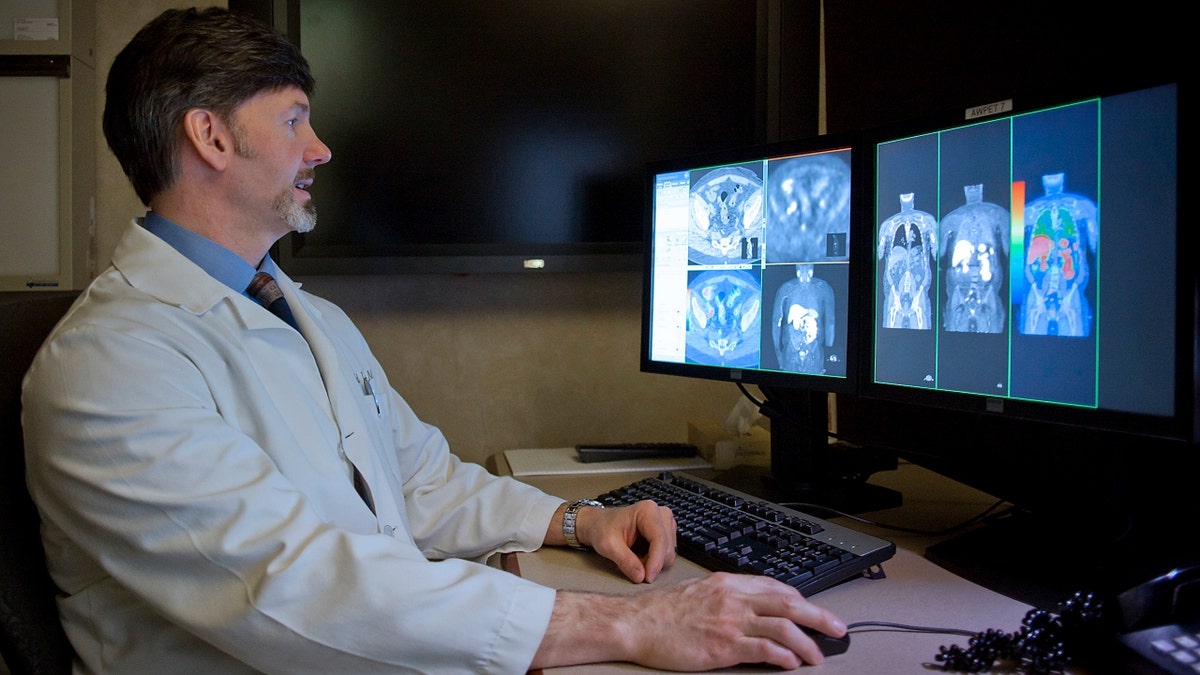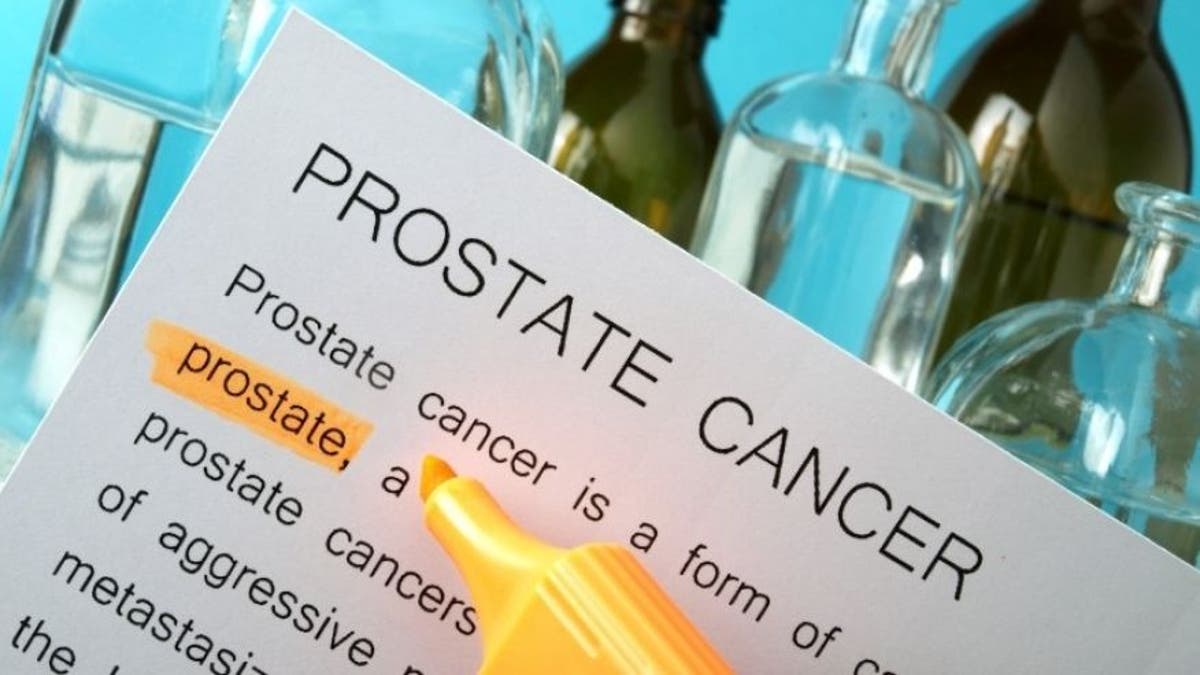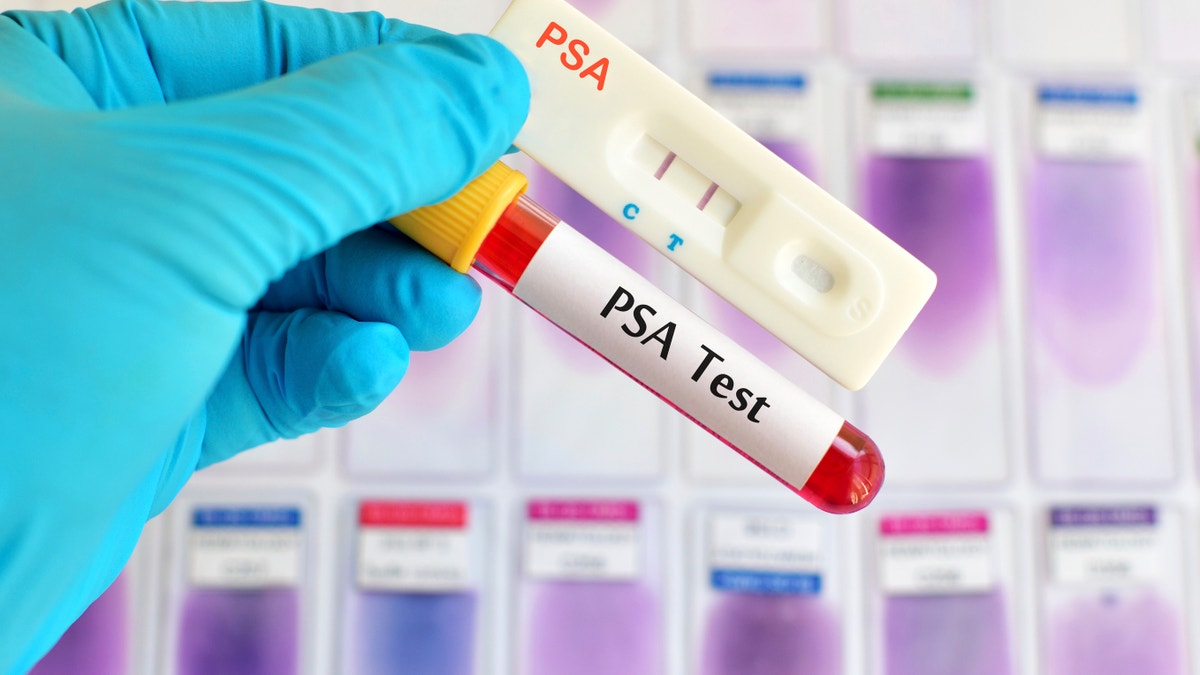
Prostate cancer is the most common cancer found in American men.
The only type of cancer more common than prostate cancer is skin cancer, according to the American Cancer Society. Symptoms of prostate cancer are usually minimal, or not experienced at all.
This common cancer is treatable when caught early, with a near 100% five-year survival rate for cancers that haven’t spread beyond the prostate or have only spread to nearby areas, per the American Cancer Society.
9 PROSTATE CANCER MYTHS, DEBUNKED
The survival rate plummets to 32% among stage IV cancer cases when the disease spreads to distant parts of the body.
Below is all you need to know about prostate cancer.

Prostate cancer is a common cancer found in men. Some people who get the cancer don’t even know they have it. (Ariana Lindquist/Bloomberg via Getty Images)
- What is prostate cancer?
- What are the types of prostate cancer?
- What are the signs and symptoms?
- What are some prostate cancer risk factors?
- What should you do if you think you have prostate cancer?
- What should I know about PSA screening?
- Is prostate cancer curable?
1. What is prostate cancer?
Any type of cancer starts when cells grow out of control in certain parts of the body. Nearly every part of the body can be affected by cancerous cells, and they can then spread to other parts of the body.
Prostate cancer is a type of cancer found in men that begins in the prostate gland and can then grow beyond that in more severe cases.
2. What are the types of prostate cancer?
Most commonly, prostate cancer is adenocarcinomas, meaning it develops in the gland cells, according to the American Cancer Society.
There are other types of the cancer, according to the source, but these are rare.
Other types are small cell carcinoma, neuroendocrine tumors, transitional cell carcinomas and sarcomas.
THE DO’S AND DON’TS OF THE PROSTATE CANCER DIET
In general, prostate cancer grows very slowly. In fact, many people who have it die from other causes without ever knowing that they had the cancer, according to the ACS.
3. What are the signs and symptoms?
“The most common symptom is no symptom at all,” Dr. Christopher Anderson, a urologist with New York-Presbyterian/Columbia University Irving Medical Center, told Fox News in 2017.

Although symptoms are not always experienced by those with prostate cancer, two common symptoms are pain in the bones and weight loss. (iStock)
Some men may experience symptoms like pain in the bones and weight loss when the cancer has already spread, Anderson said.
Dr. Philip Kantoff, a medical oncologist and chair of the department of medicine at Memorial Sloan Kettering Cancer Center, reiterated that the disease doesn’t typically cause symptoms. Symptoms could instead be due to an enlarged or inflamed prostate, neither of which are cancerous.
Dr. Ketan Badani, vice chairman of urology at Mount Sinai Health System, said that “some patients may have vague urinary complaints,” like having to urinate more frequently, and that there aren’t symptoms until the disease is advanced. The majority of men who have urinary issues don’t have prostate cancer, he noted.
Advanced cases of prostate cancer may present with symptoms “with benign prostate conditions, including weak or interrupted urine flow; difficulty starting or stopping urine flow; the need to urinate frequently, especially at night; blood in the urine; or pain or burning with urination,” per the ACS.
Further symptoms include pain in the hips, ribs and chest as well as numbness or weakness in the legs or feet.
4. What are some prostate cancer risk factors?
Men ages 60 to 74 are considered more at risk, according to the SEER program.
Family history, “especially a first-degree relative like a father or brother” who has been diagnosed, is another concern, Badani added.
African, Afro-Caribbean, South Asian and Hispanic men are more at risk for “more aggressive” forms of prostate cancer, he said.
CLICK HERE TO SIGN UP FOR OUR LIFESTYLE NEWSLETTER
For men of African descent, there’s an increased risk of both prostate cancer diagnosis and dying from prostate cancer, Anderson said.
5. What should you do if you think you have prostate cancer?
“A discussion with your physician is warranted before symptoms occur,” Kantoff advised, adding that men should decide with their doctors if a prostate-specific antigen (PSA) test, which looks at the level of PSA in blood, is right for them.

If you are experiencing symptoms, it’s important to have a conversation with your doctor. ( istock)
Badani recommended that men receive both annual digital rectal exams and PSA tests. Multiple PSA tests over time are a better indicator of potential concerns as opposed to a single test result, he explained.
If you’re concerned you might have prostate cancer, speak to an internal medicine doctor or a urologist, Anderson recommended. He stressed that all patients with blood in their urine should see a urologist.
6. What should I know about PSA screening?
PSA screening has been a controversial topic in the past. In 2012, the U.S. Preventative Services Task Force recommended against PSA screening when it said “there is moderate certainty that the benefits of PSA-based screening for prostate cancer do not outweigh the harms.”
PSA screening involves a simple blood test for elevated levels of a protein that may signal cancer but also can be caused by an enlarged or inflamed prostate. It can find cancer that doesn’t need to be treated, as it’s too small and slow-growing to become deadly. Radiation or surgery to remove the prostate may result in impotence and incontinence.
In 2018, the task force said in its final recommendation that men ages 55 to 69 should discuss potential benefits and negatives of a PSA screening with their physician before undergoing the test.
CLICK HERE TO GET THE FOX NEWS APP
While a PSA screening has the potential to reduce the risk of death, negatives listed by the task force include “false-positive results that require additional testing and possible prostate biopsy; overdiagnosis and overtreatment; and treatment complications, such as incontinence and erectile dysfunction.”
They do not recommend PSA screening in men ages 70 and above.

PSA testing is a way to diagnose prostate cancer. (iStock)
“Proper use of PSA is what I recommend from an early detection standpoint,” Kantoff said.
Symptoms shouldn’t be the motivating factor for screening, he said, saying it should instead be a decision in one’s 40s about whether PSA testing should be done. He recommended that those with family history or people of African American descent think about early detection.
An analysis of previous clinical trials published in 2017 said screening lessened the risk of dying from prostate cancer by 25 to 32% compared to men who didn’t get screened, a summary for patients explains online.
7. Is prostate cancer curable?
Prostate cancer is curable, but many men choose not to treat it because of the typically slow progression and the fact that it usually stays in the prostate, according to Cleveland Clinic.
More severe cases of cancer are usually treated through radiation or surgery.
The Associated Press contributed reporting, as did Andy Sahadeo and Zoe Szathmary.
For more Lifestyle articles, visit www.foxnews/lifestyle

 Latest Breaking News Online News Portal
Latest Breaking News Online News Portal




